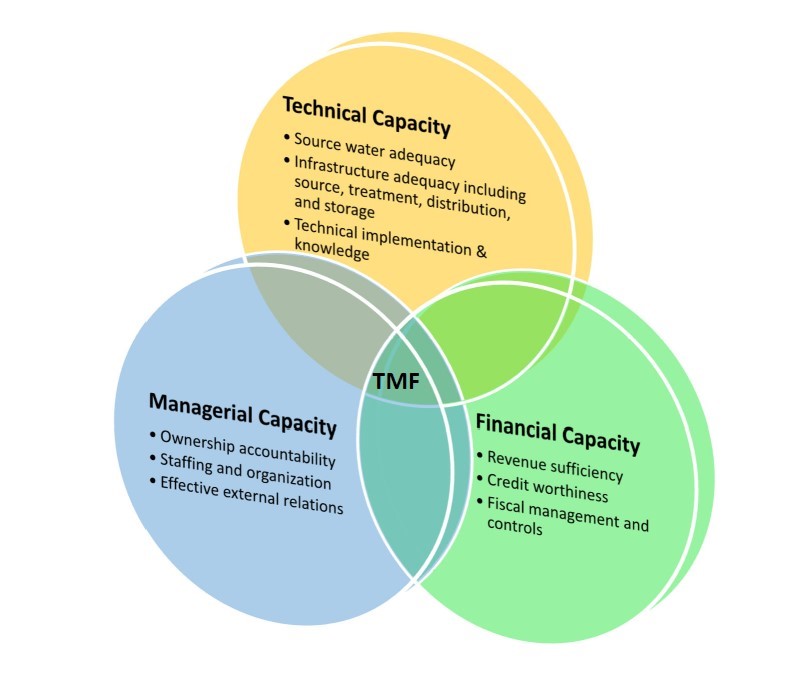Water System Capacity
Water system capacity is the technical,
managerial, and
financial capability of a water system to achieve and maintain compliance with drinking water standards and consistently provide safe drinking water.
What Is Capacity Development?
Capacity development is a fundamental component of the 1996 Safe Drinking Water Act (SDWA) Amendments. The SDWA Amendments provide a framework for states and water systems to work together to protect public health. Every state has developed a Capacity Development Program to assist public water systems in building Technical, Managerial, and Financial (TMF) capacity.
Any water system can implement capacity development activities to increase their TMF capacity. Small systems can especially benefit from capacity development. The Oregon Health Authority is committed to helping small water systems provide safe drinking water through publications, training, and technical and financial assistance.
Local officials and consumers play an important role in helping small water systems meet regulatory requirements and protect public health. Besides protecting public health, communities that support their water systems are making long-term investments in sustainable communities and economic well-being.

Technical Capacity
Technical capacity refers to the physical and operational ability of a water system. This includes assessing and ensuring the adequacy of source water and physical infrastructure as well as the technical knowledge and ability of system personnel to properly operate and maintain the system.
- Explore the menu on the left of this page to find technical resources available on the Drinking Water website.
Through Oregon's Drinking Water State Revolving Fund (DWSRF), contracts have been established with drinking water Circuit Riders to provide short-term (typically 10 hours or fewer) onsite technical and engineering assistance for community water systems serving populations less than 10,000, as well as nonprofit transient and non-transient water systems. For these systems, services are free.
Beginning with the 2022–2027 Circuit Rider contract, Oregon will also utilize state general funds to provide technical assistance to water systems that are not eligible for traditional Circuit Rider assistance, excepting only federally owned water systems. As above, these services are intended to provide short-term technical and engineering assistance (typically 10 hours or fewer) and are provided free of charge.